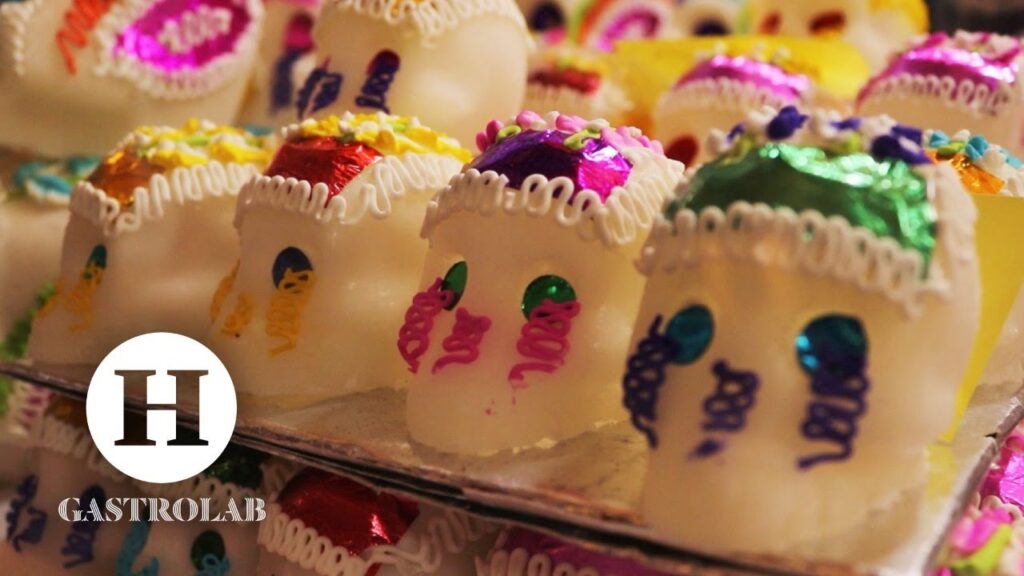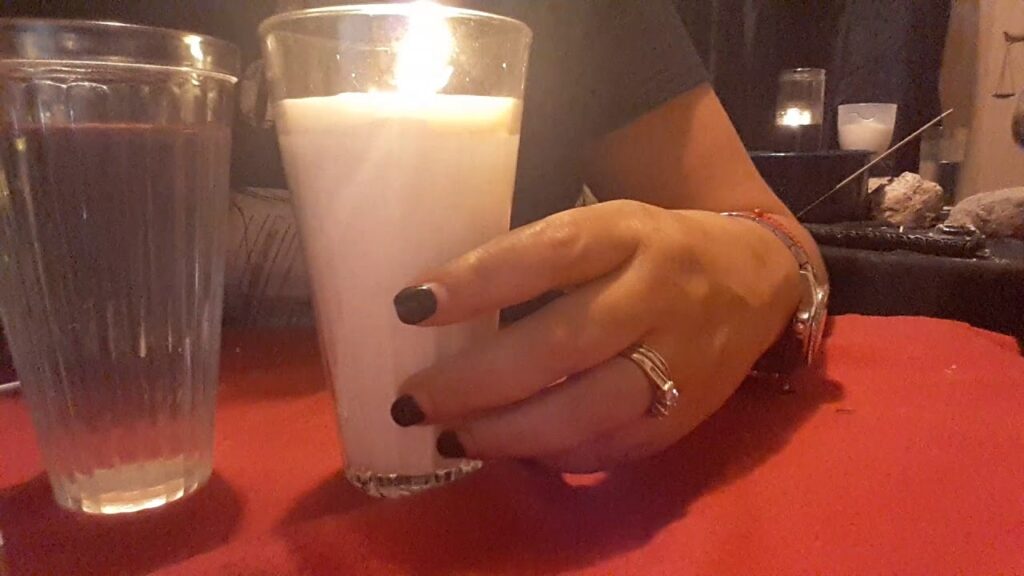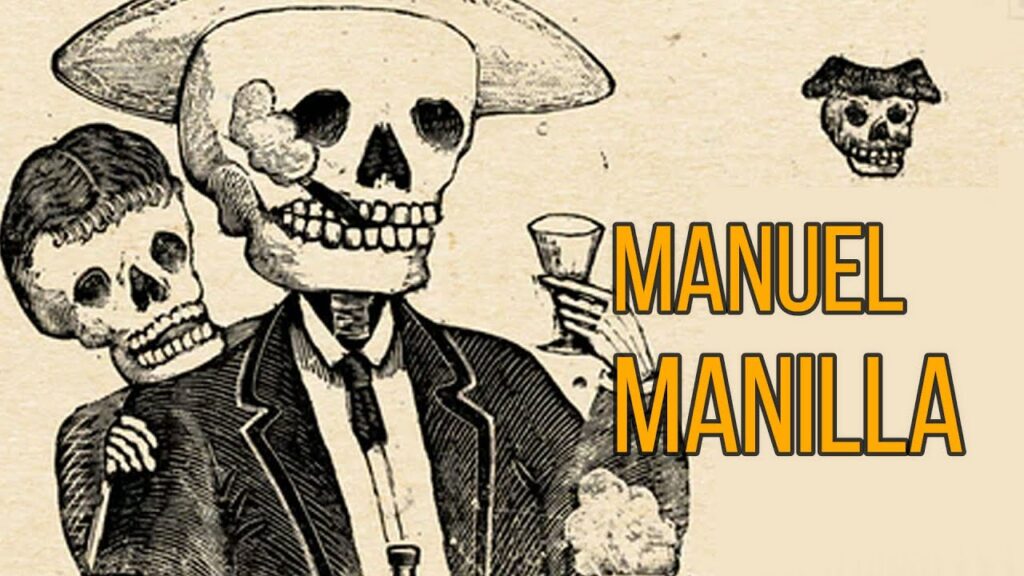A Sweet Celebration: The Sugar Skulls of Mexico’s Day of the Dead
Delving into the heart of Mexican culture, Day of the Dead (Día de los Muertos) showcases a blend of Mesoamerican ritual, European religion, and Spanish culture. Among the most iconic symbols of this vibrant celebration are the sugar skulls, or calaveras de azúcar. Far from being morbid, these sweet treats are festooned with sparkling colors and intricate designs, reflecting the festive tone of the day and the joyful remembrance of those who have passed away.
Traditionally, sugar skulls are crafted from a mixture of sugar, water, and lemon, which is then molded into the shape of a skull and left to harden. The labor of love does not end there, as each skull is then elaborately decorated with icing, feathers, colored foil, and more to create a unique, whimsical representation of the deceased. They are not only a treat to the eyes but are often inscribed with the name of the departed on the forehead, serving as a personal homage and a reminder that in Mexico, death is not the end but a continuum of life.
In the bustling markets across Mexico, ahead of the Day of the Dead, one can find vendors selling sugar skulls of all sizes, alongside marigolds, papel picado, and candles. These elements compose an essential part of the altars, or ofrendas, built in homes and cemeteries. The ofrenda acts as a beacon for the spirits, guiding them back to the world of the living for a night of celebration, where they can savor the essence of the offerings, including the vibrant sugar skulls, which embody the sweetness of memories and the joy of the life they once lived.
Unveiling the Magic of the Alfeñique Fair: A Tribute to Tradition
Every year, as the chill of autumn sets in and the days slowly succumb to the embrace of longer nights, Mexico gears up for one of its most colorful and meaningful celebrations. The Alfeñique Fair, a tradition deeply rooted in the heart of the country, springs to life, offering a vibrant homage to the dearly departed and the continuance of age-old customs. This spectacular event, held primarily in Toluca, offers a unique glimpse into the fusion of pre-Hispanic rituals and Spanish influence that characterizes much of Mexican culture.
At the heart of the fair is the exquisite art of Alfeñique, a confectionery craft that takes sugar, amaranth, and other sweet ingredients to create intricate shapes and figures. Artisans spend countless hours fashioning everything from skulls and skeletons to miniature coffins and gravestones. These edible works of art are not merely for show; they carry with them the essence of remembrance, acting as offerings to ancestors and an expression of life’s cyclical nature.
Strolling through the bustling market stalls, visitors are engulfed in a multisensory experience. The air is thick with the rich aromas of traditional Mexican cuisine, and the mélange of colors from handcrafted toys, delicate paper flowers, and elaborate costumes creates a tapestry that is as delightful to the eye as it is to the soul. The Alfeñique Fair is more than just an attraction; it is a living gallery where every corner unveils a new testament to the endurance of tradition.
Amidst the festive atmosphere, laughter, and music, there is a profound respect for the historical significance of the celebration. The Alfeñique Fair coincides with the observance of Día de Muertos (Day of the Dead), when families gather to honor their loved ones who have passed away. This convergence of festivity and solemnity underscores a fundamental aspect of Mexican culture: the embrace of mortality and the joyous commemoration of life.
For those seeking to delve deeper into the cultural fabric of Mexico, the Alfeñique Fair provides an authentic encounter with the country’s rich heritage. This annual event stands not just as a tribute to those who have departed, but also as a beacon for the continuity of Mexican artistic expression, community values, and an undying spirit of celebration in the face of life’s immutable truths.
Embracing Death with Sweetness: The Art and Significance of Calaveritas de Azúcar
Once a year, Mexico transitions into a realm where the living and the dead intermingle with vibrancy and life, celebrating Día de los Muertos (Day of the Dead). Central to this colorful festival are the calaveritas de azúcar, or sugar skulls, which symbolize death and rebirth. These intricately decorated sweets are not only a treat for the senses but also hold profound cultural and spiritual significance. Artisans pour their creativity into crafting each unique skull, painting them with lively hues and adorning them with patterns that delineate both the joy in remembrance and the acceptance of mortality.
The tradition of creating sugar skulls can be traced back to the colonial period of Mexico when the indigenous rituals merged with Catholic influences, particularly the All Souls’ Day brought by the Spanish. While the skeletons and skulls might seem macabre to the uninitiated, in Mexican culture, they are often depicted with a touch of whimsy and affection. These diminutive calaveritas serve as beacons of emotion, where the smiles and glittering eyes painted on sugar remind us that life, like sugar, is sweet yet fleeting. As families gather to honor their departed loved ones, these calaveritas become a bridge to the past, connecting generations through stories and memories carried in their sugary contours.
Creating a calaverita de azúcar is a meticulous and artistic process that requires patience and precision. It begins with crafting the skull molds from clay or plastic, followed by mixing granulated sugar with meringue powder and water to form a paste that is then pressed into the molds. Once hardened, the skulls are removed, and the embellishment begins. Artists use colorful icing, feathers, foil, and more to breathe life into these symbols of death, weaving in elements that often reflect the personalities of those who have passed. Each skull, whether smiling or solemn, becomes a canvas that captures the spirit of this unique celebration, where death is not feared but embraced with sweetness and color.
From Craft to Offering: The Cultural Journey of Sugar Skulls in Mexico’s Día de Muertos
The tradition of crafting sugar skulls for the Día de Muertos, or Day of the Dead, is deeply rooted in Mexico’s rich history. These vibrant and ornately decorated sugar pieces have been a part of the celebration for centuries. The process of making sugar skulls begins with the careful mixing of sugar, water, and lemon – ingredients that are molded into the shape of a skull to ultimately create a canvas for artistic expression. Artists, both professional and novice, eagerly engage in decorating them with colorful icing, feathers, foil, and more, transforming these sugar forms into lively representations of the departed.
Sugar skulls are not just decorative items but also carry profound cultural significance. They serve as a symbol of the duality of life and death, an idea at the core of the Día de Muertos observance. In this celebration, death is not seen as an end but as a natural phase in the continuum of existence. Skulls, therefore, represent both ancestors and the playful mockery of death itself. Each skull is often personalized with the name of the deceased across its forehead, making it not only an offering but also a homage to specific individuals who have passed on.
The presence of sugar skulls during Día de Muertos transcends mere decoration and contributes to the ritual of remembrance. These sweet treats are typically placed on altars known as ‘ofrendas’, along with marigolds, candles, and favorite items of the departed. The altars celebrate the return of the spirits and provide them with the essence of the offerings. For family and friends, the act of creating sugar skulls and placing them on the altar is a way to reconnect with the deceased, enjoying a moment of reflection and remembrance, surrounded by color, music, and the joy of the life shared.



